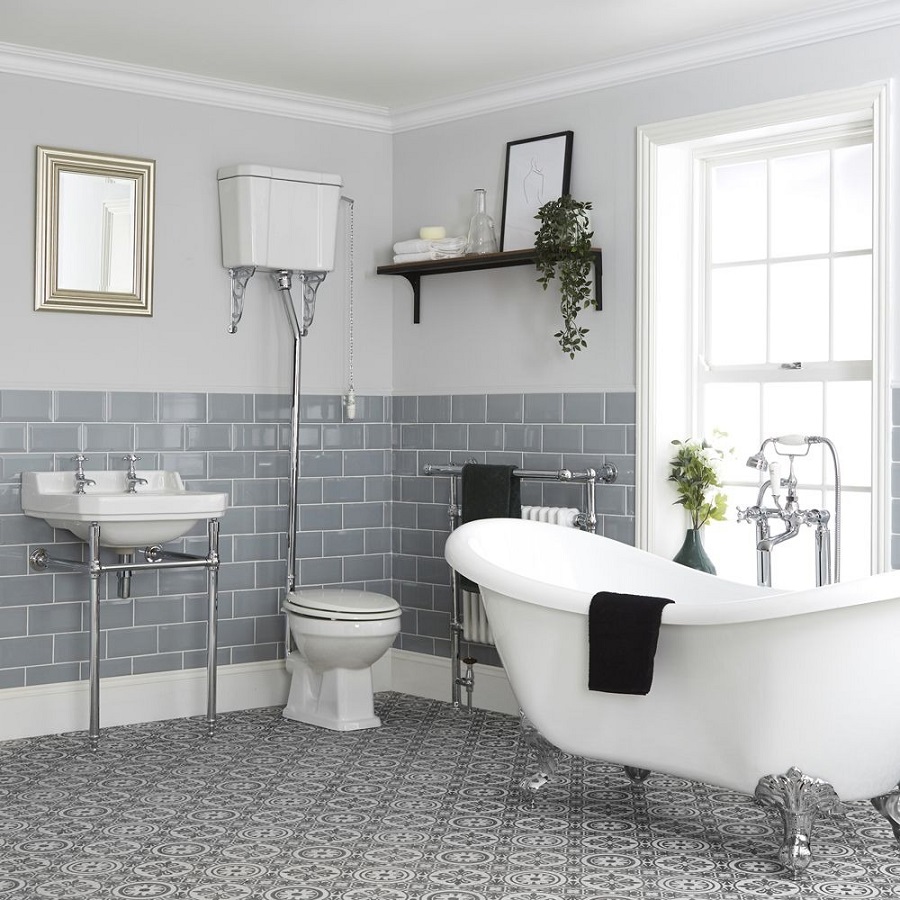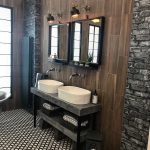History and Etymology of Restroom and Bathroom
Understanding the history and etymology of ‘restroom’ and ‘bathroom’ can provide insight into how these terms came to be.
The term ‘restroom’ began in the late 19th century America. It emerged as a polite, public-facing word. It referred to a room where people could rest away from the hustle of public life or travel. Over time, this term took on the connotation of a public facility containing toilets and sinks.
‘Bathroom,’ on the other hand, has a more straightforward etymology. Stemming from the late 18th century, ‘bath’ denoted a place for washing, and ‘room’ suggested a separate space. Hence a ‘bathroom’ was a room with a bath, which often included other sanitation facilities such as toilets and sinks.
In early uses, a ‘bathroom’ generally meant a room in a private residence with a bath and often a toilet. The terms ‘bath’ and ‘bathroom’ originally had no association with public facilities.
Comparing ‘restroom vs bathroom’ in history and etymology shows how language can shape our understanding of the function and design of these spaces. As society changed, so did the terms people used to describe where they took care of personal hygiene. This evolution of language reflects both social etiquette and architectural trends.
The origins of the terms entail both social and practical implications, which have helped shape the design and function of modern amenities. Recognizing these historical differences is key in understanding current uses and the subtleties between ‘restroom’ and ‘bathroom.’
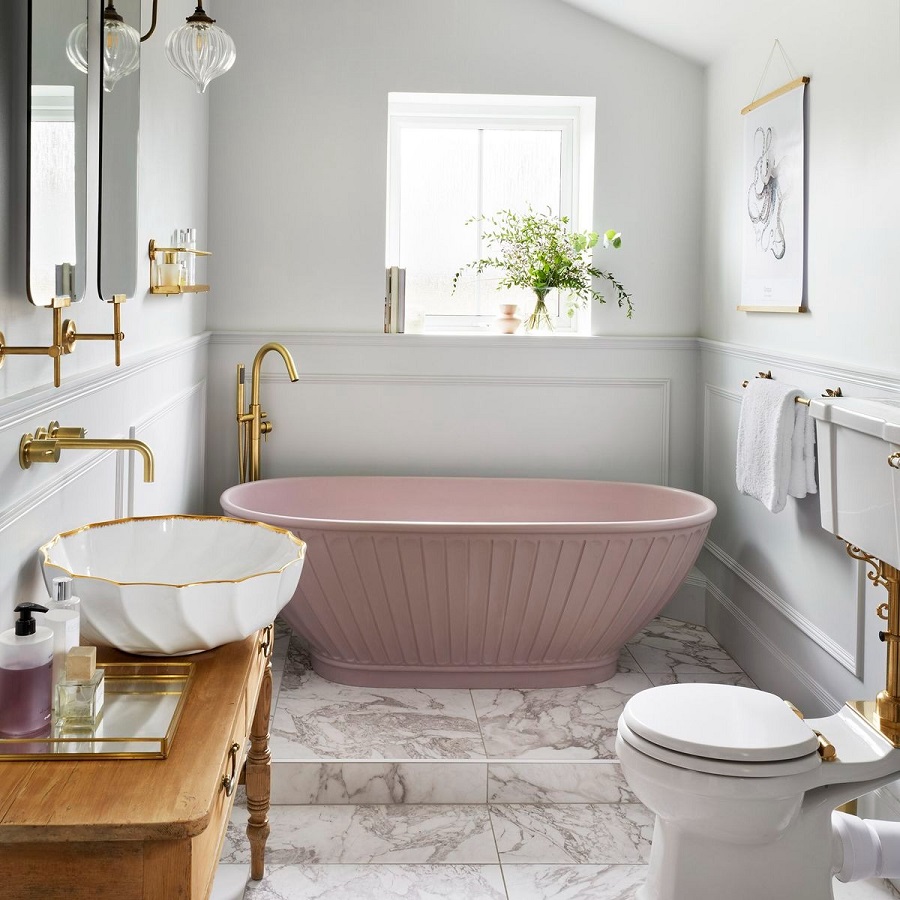
Cultural Differences in Terminology
The terminology for spaces dedicated to personal hygiene varies widely across different cultures. This difference is not merely linguistic but also reflects distinct societal norms and practices. In the United States, ‘restroom’ is the preferred term in public settings. In contrast, ‘bathroom’ often implies a room with a bath, typically used in residential contexts.
In the United Kingdom, ‘loo’ or ‘WC’ (water closet) are common terms for public toilets, with ‘bathroom’ reserved for a room with a bath or shower at home. Australians may use ‘dunny’ for a standalone outdoor toilet and ‘bathroom’ for the indoor equivalent. These varying terms indicate the unique cultural approaches to discussing and designing these spaces.
In many parts of Europe, ‘toilet’ is the go-to word for any facility used for relief, regardless of the presence of an actual bath or shower. These cultural nuances influence how signage is designed and language is used in public and private spaces internationally. Acknowledging the cultural differences in terminology of ‘restroom vs bathroom’ not only enhances international understanding but also ensures more effective communication for travelers and designers alike.
Design and Function: Comparing Restrooms and Bathrooms
When we look at ‘restroom vs bathroom,’ design and function play key roles. Restrooms, being public, focus on efficiency and durability. Their design includes multiple stalls and sinks to accommodate high traffic. They may also have hand dryers or paper towel dispensers. Materials in restrooms are often chosen for easy cleaning and resistance to wear.
Bathrooms, in private homes, prioritize comfort and style. Personal bathrooms include a bath or shower. They often have storage for toiletries and towels. Homeowners might choose aesthetic materials such as marble or ceramic tiles. Lighting is usually softer, creating a relaxing atmosphere.
In both, the layout is important for ease of use. Restrooms often separate sinks from stalls to streamline traffic. Bathrooms might blend spaces, like having a vanity near the bath.
Safety is also vital in both designs. Non-slip floors and grab bars are common features. Strong locks ensure privacy in both public and private settings.
The main difference lies in the personal touch. Home bathrooms often reflect the owner’s taste. They might display decorative elements or personal items. Restrooms avoid such decorations for a more neutral and functional approach.
Through design and function, restrooms and bathrooms serve different needs. They address public efficiency versus private comfort. Yet, they share a common goal: to provide a clean and accessible space for personal hygiene.
Common Features of Restrooms and Bathrooms
Despite the differences, restrooms and bathrooms share several common features. These elements are crucial for fulfilling their primary function – personal hygiene. Firstly, both usually have toilets. This key feature is central to the design, whether the space is in a public setting or a private home. Secondly, sinks are present for handwashing, a vital aspect of hygiene. Mirrors above the sinks serve both practical and aesthetic purposes, allowing users to check their appearance or aid in grooming.
Additionally, both restrooms and bathrooms often provide some form of drying for hands, either through paper towels or electric hand dryers. Privacy is another feature that both spaces prioritize with the installation of locks on stalls or bathroom doors. Lastly, proper lighting is important in both contexts, ensuring visibility and safety for users.
In summary, ‘restroom vs bathroom’ discussions show varied design philosophies, yet when it comes to the essential aspect of hygiene, both include toilets, sinks, mirrors, means of drying hands, privacy considerations, and lighting. These features create the functional backbone of any space dedicated to personal hygiene, regardless of cultural or contextual differences.
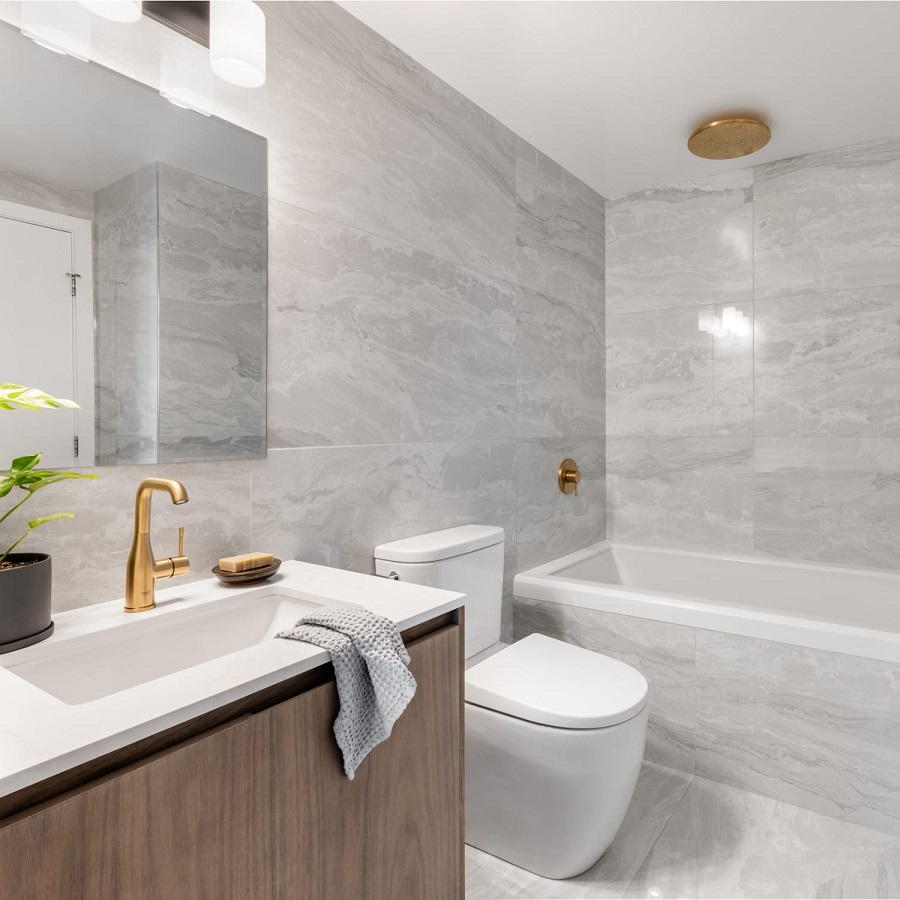
Legal and Accessibility Considerations
When evaluating ‘restroom vs bathroom’, it’s important to consider legal and accessibility requirements. These regulations are key to ensuring both types of facilities are usable by all individuals, including those with disabilities.
In public restrooms, the Americans with Disabilities Act (ADA) sets forth clear guidelines. The law requires restrooms to have features like grab bars, adequate stall space, and wheelchair-accessible sinks. These elements make restrooms safe and navigable for people with mobility challenges.
Private bathrooms also adhere to certain standards, although they are less stringent than in public spaces. However, many homeowners now recognize the benefits of designing accessible private bathrooms. Features such as walk-in showers and higher toilets offer comfort and ease of use for everyone.
Both public and private spaces must have clear floor space for maneuvering, non-slip surfaces, and accessible fixtures. Doors need easy-to-grab handles, and locks should be operable with minimal dexterity. These are all measures that increase safety and accessibility.
The goal of these legal standards is to create an inclusive environment. They ensure that no matter the setting, restrooms and bathrooms cater to a wide range of needs. By doing so, they uphold the dignity and independence of all users.
Thus, understanding the legal and accessibility considerations is vital. It underscores the commitment to providing equal access to the essential facilities embodied by both restrooms and bathrooms.
Usage in Commercial and Residential Settings
The use of ‘restroom vs bathroom’ varies in commercial and residential settings. In commercial spaces, the term ‘restroom’ typically refers to public toilets. These are accessible in places like malls, restaurants, and office buildings. Here, ‘restroom’ implies a shared facility focused on utility and quick access.
In residential settings, ‘bathroom’ is the preferred term. This space is private, part of a home. It usually includes a bath or shower, aside from just a toilet. Homeowners’ bathrooms point to comfort and personal use rather than high traffic needs.
Commercial restrooms must handle constant use. They have sturdy fixtures and non-porous surfaces for hygiene. Their design mananges flow to reduce wait times and maintain cleanliness. Privacy is provided with individual stalls that have locks.
Bathrooms in homes cater to the individual or family. They feature personal touches. Owners select designs to create a feel of relaxation and intimacy. Residential bathrooms may have luxury items. Examples include heated floors, ornate tiles, or a jacuzzi tub.
Overall, ‘restroom vs bathroom’ indicates the setting. It points to material choice, user traffic, privacy levels, and comfort priorities. While terminology can blend together, the intent behind the use of each space drives their design and function differences.
Language Evolution: How Terms Change Over Time
Language is dynamic, evolving as society changes. The terms ‘restroom’ and ‘bathroom’ exemplify this constant language adaptation. Once, ‘restroom’ described a space for rest, not associated with toilets. It evolved in public use as a euphemism for toilet facilities. ‘Bathroom’ started as a private room for bathing. Over time, it incorporated toilets, reflecting changes in home design.
The shift in meanings often comes from technological advances, social norms, and cultural exchanges. In the past, having a room dedicated to bathing was a luxury. As plumbing improved, more homes could install baths and toilets, changing the ‘bathroom’s’ purpose.
Cross-cultural interaction also influences language. Travel and immigration introduce new terms. For instance, American ‘restroom’ finds little use abroad. Similarly, ‘WC’ or ‘loo,’ common in the UK, are rarely used in the US.
In media and literature, the depiction of bathrooms and restrooms adjusts perceptions. As characters use these spaces, terms enter everyday vocabulary. Plus, advertising shapes language. Marketers select words that resonate with consumers, popularizing certain terms.
Industry standards contribute as well. Real estate descriptions and architectural designs use these terms to convey features of a space.
‘Sink’ or ‘toilet’s’ usage might replace ‘restroom’ or ‘bathroom’ for precision. Yet, ‘restroom’ and ‘bathroom’ stay in use, showing the balance between technical language and social familiarity.
In sum, ‘restroom vs bathroom’ terms adapt over time. They reflect societal trends, technological progress, and cross-cultural communication. The subtle shifts in these terms’ meanings reveal broader changes in the way we live and speak.
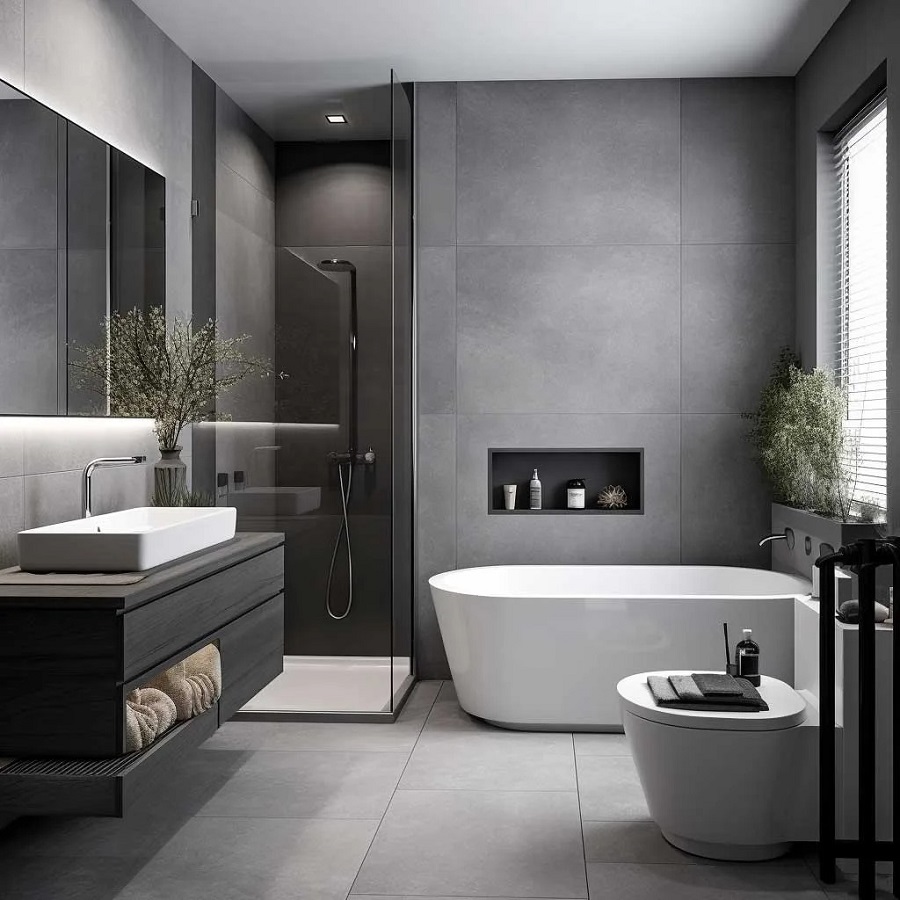
Impact on Architecture and Interior Design
When ‘restroom vs bathroom’ is considered, architecture and interior design are heavily influenced. First, architects design spaces with their functions in mind. In public buildings, restrooms need to be easy to find and use. They often have simple layouts and hard-wearing materials. For instance, tiles and stainless steel are common due to their durability and ease of cleaning.
In homes, bathrooms serve as a personal retreat. Designers focus on creating a relaxing and comforting environment. They might include soft lighting and warm colors. Interior design in home bathrooms can reflect personal styles. Homeowners may choose decorative fixtures or luxury features like spa tubs.
Another impact is on space planning. In commercial designs, restrooms are placed strategically to handle traffic flow. Residential bathrooms may be en suite to bedrooms or centrally located for convenience. Space efficiency is key in both, but comfort drives home designs.
Furthermore, trends in design and sustainability affect both restrooms and bathrooms. Architects now often include eco-friendly features. For restrooms, this could mean water-saving toilets and sensor faucets. In bathrooms, energy-efficient lighting and water-conserving showers are popular.
In terms of accessibility, designs incorporate features to comply with laws. Ramps, wide doors, and no-step entries are now standard in many restrooms and bathrooms.
Overall, the ‘restroom vs bathroom’ conversation extends to how we design spaces. It shapes the way architects and interior designers approach their craft. Functionality, audience, and aesthetic preferences all play roles. These spaces are planned to match their intent – public utility or private comfort.
